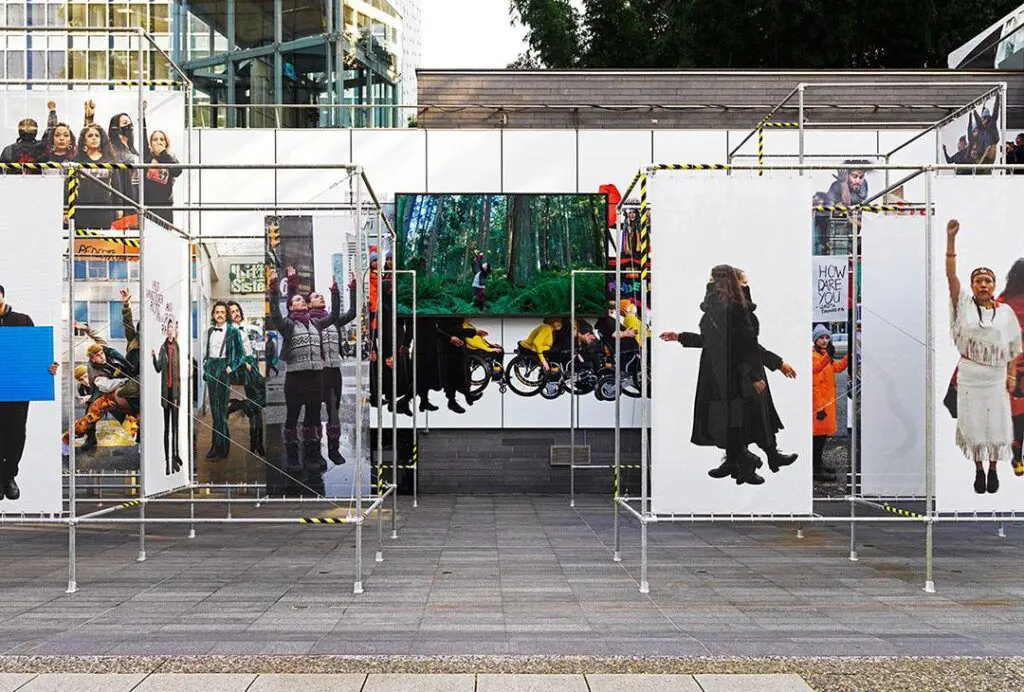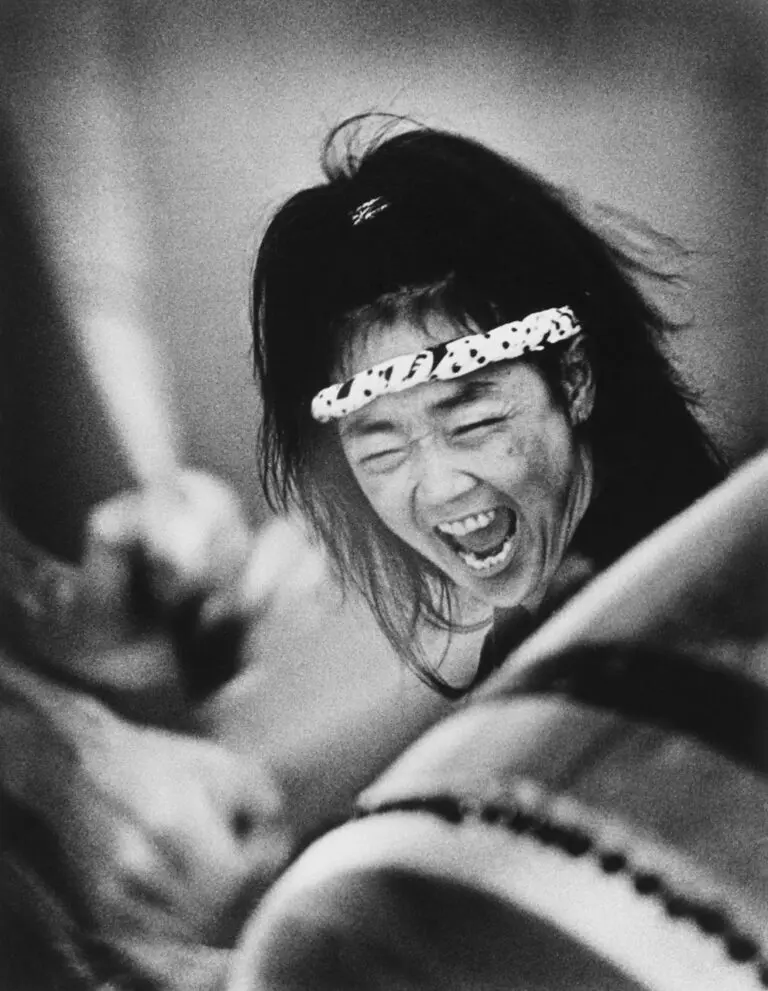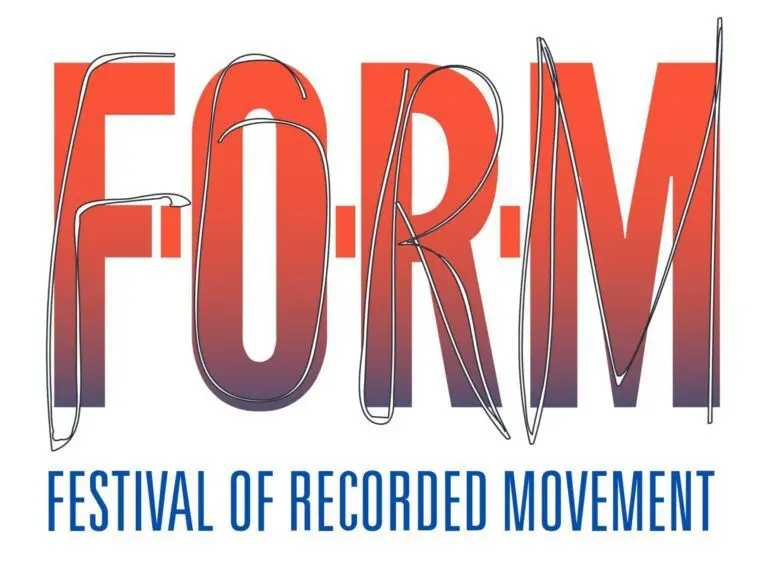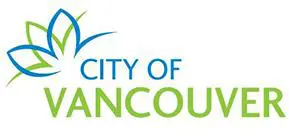Film Screening
F-O-R-M + Pedestrian Protest
September 13-19
Mon Sep 13–Wed Sep 22, 2021 | 9:30 AM–5:30 PM

Evann Siebens + Keith Doyle, Pedestrian Protest, 2021, site-specific installation at Vancouver Art Gallery Offsite, April 9 to October 11, 2021, Photo: Ian Lefebvre, Vancouver Art Gallery
The Vancouver Art Gallery is excited to partner with F-O-R-M (Festival of Recorded Movement) for the only in-person event at their 2021 festival.
From September 13 to 22, we will present a curated screening of dance and movement films by artists from across Canada at Vancouver Art Gallery Offsite, located at 1100 West Georgia Street. Many of the short films were created by youth and emerging artists through F-O-R-M’s Commissioning Funds program, focusing on the body in motion through film. Each film embodies stories of social change and moves us towards a deeper connection to our bodies, land and community.
Free and open to the public, this curated screening will take place on a 24-hour loop with audio running from 9:30 AM to 5:30 PM daily. Stop by and stay for 5 minutes to enjoy a few films or for the entire 90-minute-long program!
This event is presented in conjunction with the exhibition Offsite: Evann Siebens + Keith Doyle. The artists’ multi-media installation Pedestrian Protest explores how the moving body, whether in solitude or en masse, can become a political act.
This selection of films was curated by Sophia Wolfe, Tamar Tabori and Evann Siebens.
FILMS SHOWING
Kelly McInnes, Become, this earthly plane (2021)
“A ritual of evolution and life cycles, Become, this earthly plane ponders where we come from and where we’re going. It revels in the magic of how we create ourselves and the constant that is change. It is an invitation to remember and an honouring of all that is life.”
Zahra Shahab, soft teeth (2019)
“soft teeth is an experimental video that explores the idea of a mutable body through the interaction of costume design, choreography, and after effects. An unpredictable laboratory of digital and choreographic fusion, soft teeth is an attempt to illustrate the queer idea of an unstable and continually emergent identity.”
Tamar Zehava Tabori, Run-of-the-Whip-Poor-Will (2019)
“Questioning the typical is a way of inquiring about the strange. The more you sit and think about it, the more the normal becomes the bizarre. If ‘one man’s trash is another man’s treasure,’ then one man’s ordinary is another man’s extraordinary.”
Aria Evans, Fluid (2021)
“In creating this dance film, I was asked to imagine what queerness looks like in the future. The future I am dreaming of is one where we return to the land and waters. We can learn so much from water. We are water. Water is life. If we look to water as a teacher, what can it offer to us about understanding the fluidity of gender, sexuality and self.”
Sabrina Naz-Comănescu, Bonum (2017)
“After she cycles through two steps back and one step forward again, the dangers of complacency are revealed and the reward that is nestled in perseverance is imagined. Conceivably this is the taste of Bonum.”
Karmella Benedito De Barros and Lexi Mellish-Mingo, Where We Meet (2020)
“Where We Meet is an experimental film exploring the Black femme body and its relationship to space through conscious movement on the unceded and unsurrendered territories of the Tsleil-Waututh, Squamish and Musqueam people. The story follows our protagonist as they navigate isolation and seek a sense of belonging in a conflicting and new environment. Drawing on themes of double consciousness and experimental embodiment, this story explores the relationship between Blackness and the environment in which this concept exists.”
Elizabeth Armitage, Foreign Ghost (2018)
“Foreign Ghost is the experience of being neither, both, one or the other. Based on the experiences of Chinese-Canadians, Foreign Ghost attempts to give the community an understanding of biculturalism and biracialism. The journey is followed throughout Vancouver, exploring the different cultures in space and how that influences identity. Water can influence the movement of a fish if it is not strong enough to swim in the direction it wants to go.”
Raven Grenier, Catching Spirit (2020)
“Catching Spirit is about a dream I had where I was overthrown into the ocean right into the middle of a whirlpool of sharks. There were all types of sharks of varying shapes and sizes that circled around me. I was saved by the orcas who brought me down to the bottom of the ocean. The piece challenges Western notions of time and space, and imperialistic thought that linearizes our relationship to the earth in terms of what is above and what is below.”
Starr Muranko, Reflections on a Chapter: An Offering to the Land That Held Me (2021)
“A visual poem of gratitude inspired by the full-length dance/theatre piece Chapter 21. Chapter 21 explores what happens when a vibrant, active artist comes face to face with a crippling collision of events. Chapter 21 is a reflection on the days that have come to pass, and the art of becoming. A new baby boy, Chromosome 21, the big “C” diagnosis, 21 days between treatments, and 21 days to re-pattern beliefs. This is a film about courage, faith and resilience.”
Heather Lamoureux, Mothers Map (2017)
“Recalling our self that believes her instincts, that does not apologize for being, that knows there is no hierarchy, that doesn’t retract her heart, that speaks her opinions, that feels, that finds pleasure, that knows life creates life. We feel vibrancy and power in her pulse, as she suffocates, we suffocate; as she is pierced and poisoned, our light dwindles. As we touch her magic, we remember our story, our divinity and our strength. Simultaneously we recall our attachment to an endless pain, knowing we have taken too much. And so we offer…”
Jeanette Kotowich, Territory (2020)
“Territory is a site-specific short film created by dance artist Jeanette Kotowich (Cree/Métis and European ancestry). It embodies territory and acknowledges land, with the intention that those witnessing will be inspired to do the same. With deep reverence it is filmed on the unceded, ancestral lands of the xʷməθkʷəy̓əm (Musqueam), Skwxwú7mesh (Squamish), and Səl̓ilw̓ətaʔɬ (Tsleil-Watuth) First Nations.”
Kattie Coolidge, Children of Takaya – Slahal (2016)
“Tsleil-Waututh dance group Children of Takaya perform the Slahal song and dance.”
Evann Siebens, Orange Magpies (2017)
“In Orange Magpies, dancers in bright orange utilitarian jumpsuits move through the landscape of Vancouver. Fast, sharp editing, match-on-action techniques, and a driving beat create a structural danced film. Projecting the images and familiar locations overtop the neoclassical architecture of the Vancouver Art Gallery is juxtaposed with the acknowledgement that these dances were shot on sites that are unceded and the traditional territories of the Coast Salish peoples, Sḵwx̱wú7mesh (Squamish), səl̓ilwətaɁɬ (Tsleil-Waututh), and xʷməθkʷəy̓əm (Musqueam) nations.”
Butterflies in Spirit, Butterflies in Spirit (2020)
“The Butterflies in Spirit are a dance group of family members of Missing and Murdered Indigenous Women and Girls who represent their missing and murdered loved ones. In this piece they dance to two songs: Burn Your Village to the Ground and Sisterz. The first part of the piece is contemporary, which are the spirits of Missing and Murdered Indigenous Women and Girls. The second part is the hip-hop piece, which shows that we’re still here, we’re still strong, and here we are right now. The third piece is the traditional piece where we represent our different nations from across Canada.”
Carolina Bergonzoni, Ho.Me (2019)
“Ho.Me explores themes of belonging, comfort and discomfort in relation to the notion of inhabiting the body. The piece is comprised of three portraits of individuals who exist in different bodies but are linked by a certain narrative. The three performers move through solo material in the private, intimate, space of their homes, and eventually become an ensemble in the formal setting of an art gallery, building a connection that speaks to togetherness. Ho.Me revels in the beauty of difference and the universality of the body; it highlights the relationship between the body and the self and the creative possibilities of the body.”
Esie Mensah, A Revolution of Love (2020)
“A Revolution of Love follows a young black woman as she grapples with the histories of her ancestors, the present-day violence ravaging her community, and begins to imagine what her future looks like through dance.”
Kevin Shawn Fraser, Mine, No Alarms, RED, Kamay, and Fairy Creek blockade (2020/21)
“A collection of short film works by members of Immigrant Lessons, highlighting the creations of youth/emerging qtbipoc artists as well as shedding light on social justice movements that are dear to our hearts.”
ABOUT F-O-R-M
F-O-R-M (Festival of Recorded Movement) was founded in 2015 by dance artist Sophia Wolfe, with the support of Company 605 and Kristina Lemieux, on the unceded territories of the xʷməθkwəy̓əm (Musqueam), Skwxwú7mesh (Squamish) and Səl̓ílwətaʔ/Selilwitulh (Tsleil-Waututh) Nations.
F-O-R-M is an international movement-on-screen festival that centres the voices of youth and emerging artists. F-O-R-M screens and commissions films that explore the limitless possibilities of the body in motion through film. The festival provides support and a platform for early-career artists while introducing audiences to expansive, genre-defying filmmaking. By bringing together youth and emerging artists throughout the festival programming, F-O-R-M aims to create opportunities for each generation to inspire and learn from the other: sparking conversation, expanding networks, and building community. www.f-o-r-m.ca


